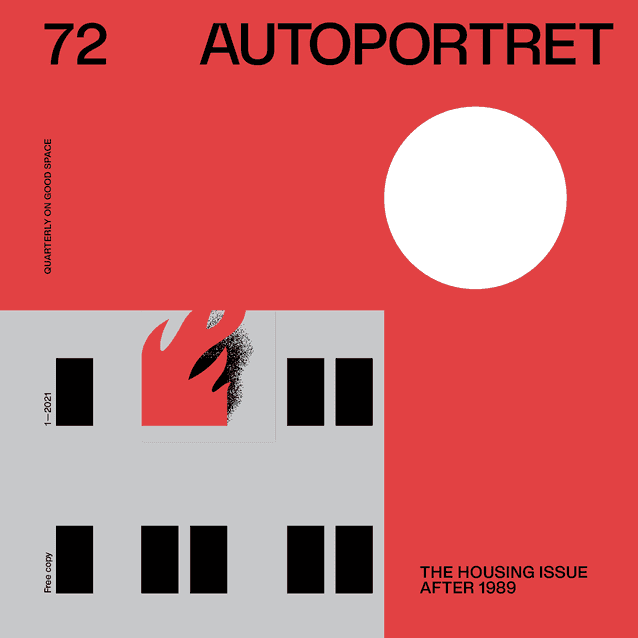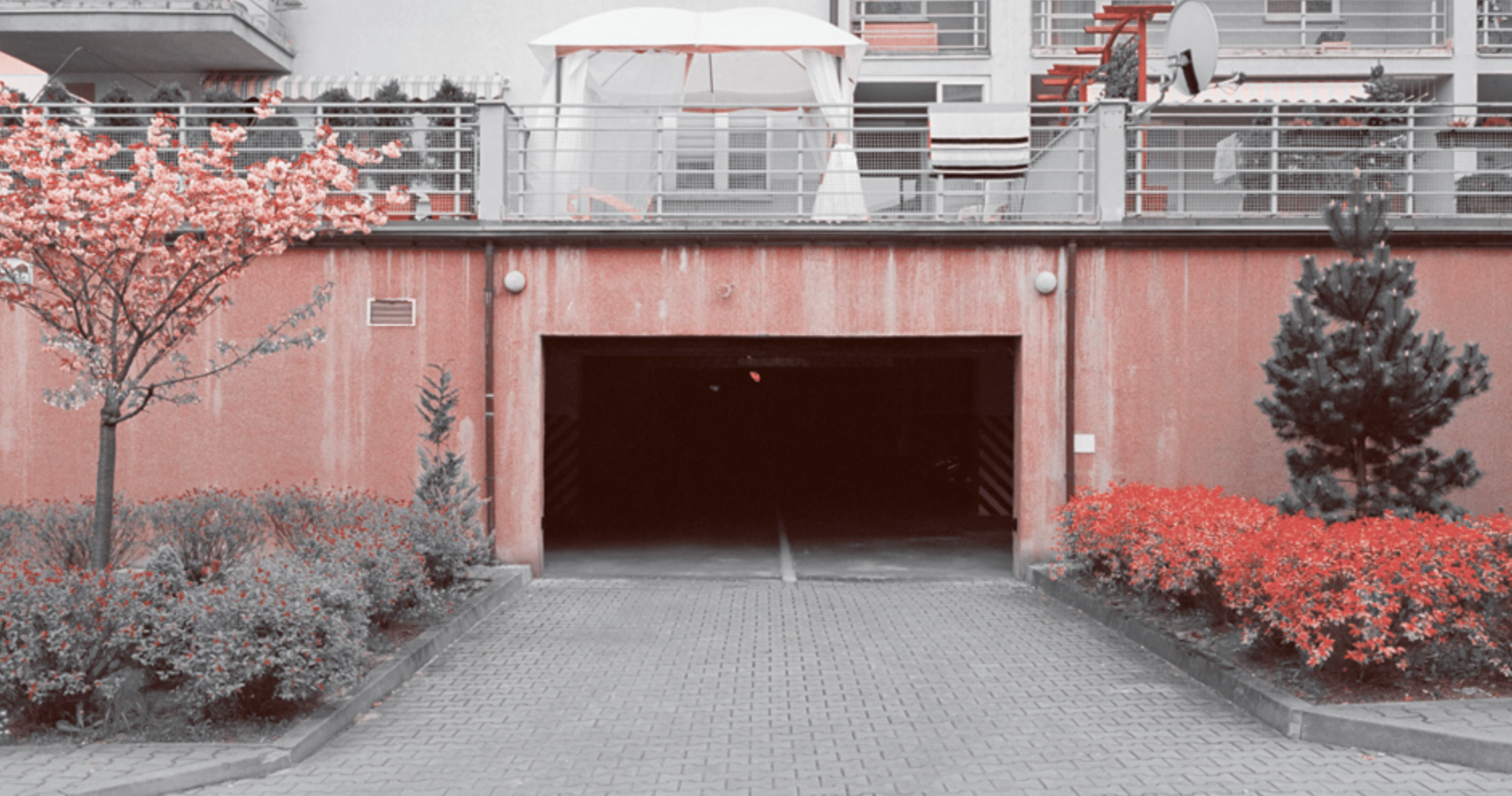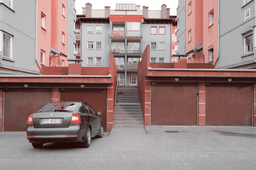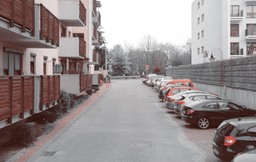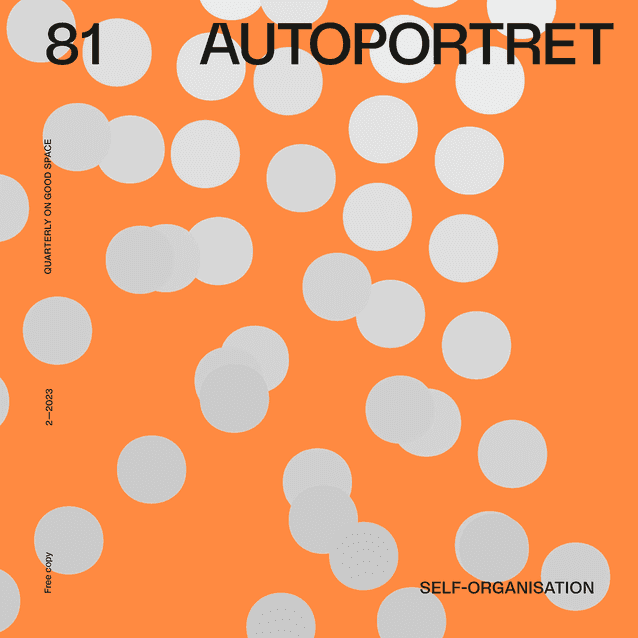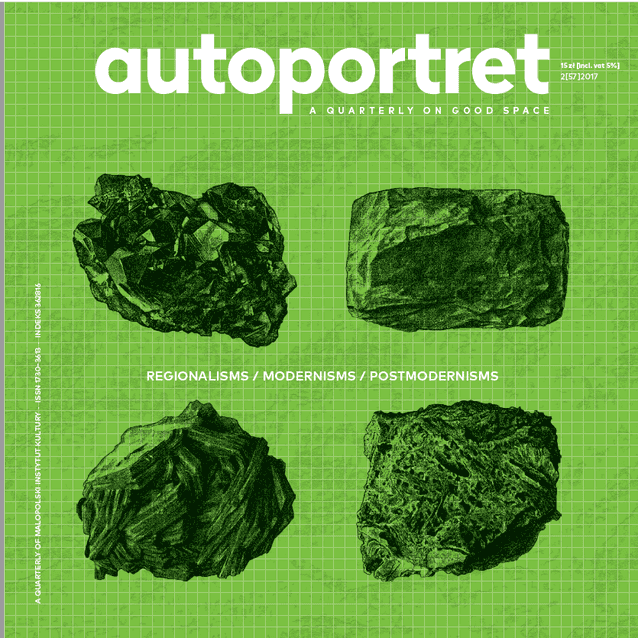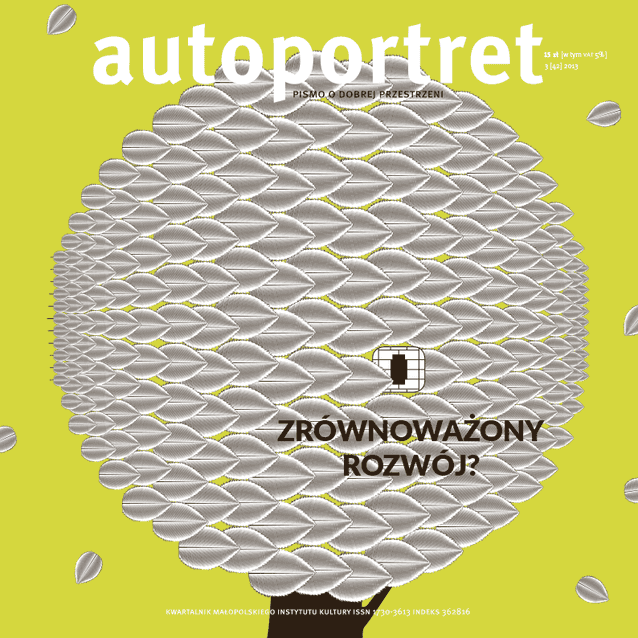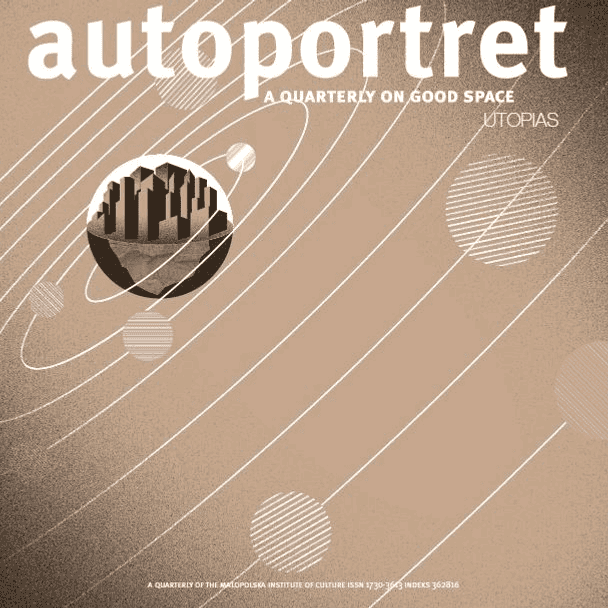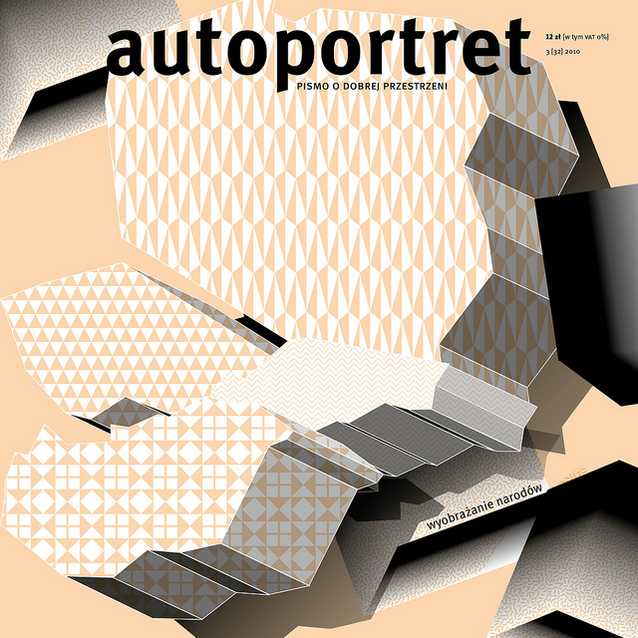photos: Jarek Matla
Poverty, limited access to vital public services, and economic inequalities, especially within the domain of housing, are systemic phenomena: over the last three decades, a decent house that would offer adequate conditions of health and hygiene has become a luxury that fewer and fewer people can afford. The privatization of the current social housing fund, the government’s support almost exclusively for the construction of private houses and for real estate developers, the encouragement of the transformation of the living space into an investment for profit through fiscal measures favourable to this aim—all these have led to the current state of affairs.[1]
The above quote comes from the Manifest petru dreptate locativă (Housing Justice Manifesto), published last April by the Romanian network of associations and groups Blocul pentru Locuire (Housing Bloc), fighting for a fair and equitable housing policy in response to the coronavirus pandemic. The latter revealed and deepened the scale of the housing crisis in Romania. Data published by the Eurostat show that the country is facing serious problems: in 2018, Romania had the highest share of overcrowded housing among European Union countries (46 per cent) and severe housing deprivation (16 per cent of the population live in overcrowded apartments with at least one major disadvantage, e.g. a leaking roof, no bathroom or toilet, too dark).[2] Romania also had the highest percentage of people at risk of poverty and living in overcrowded homes. Having said that, after studying the Eurostat data, we will notice that many countries experience these problems on a similar scale. In terms of overcrowded housing, Latvia,
Bulgaria, Croatia and Poland are close behind. The highest rates of severe housing deprivation are recorded in Latvia, Bulgaria, Poland, Hungary and Lithuania. As in Romania, alarmingly high numbers of people at risk of poverty live in overcrowded flats in Poland, Slovakia and Bulgaria.[3]
It is tempting to interpret these comparisons as another symptom of the “poverty of small Central and Eastern European countries”, a typically Central European ailment, resulting from the repeatedly described structural backwardness of the entire region. However, when we also take into account other indicators related to the quality of housing, the picture becomes somewhat more complicated: among the countries with the highest financial burden related to the cost of housing (expressed in the number of households that spend more than 40 per cent of their income on housing), Greece is clearly the leader; excessive costs of housing also plague many residents of Great Britain, Belgium, and Germany.[4] If we went beyond Europe and looked at the housing situation on other continents, it would turn out that the people of Canada, Kazakhstan, Chile and India would be equally eager to sign the manifesto for housing justice. Seen from this perspective, housing problems in Central Europe turn out to be not an endemic phenomenon, but a part of the global crisis. Former UN Special Rapporteur for the right to adequate housing Raquel Rolnik sees this crisis as “the expression and the result of a long process of deconstructing housing as a social good and transforming it into a commodity and financial asset.”[5] This process is inextricably linked with the expansion of the reactionary political and economic concept of neoliberalism. Central European countries played a special role in the history of commodification and financialization of housing. By looking at this story, we can illuminate both the key features of the neo-liberal doctrine and the sources of the housing problems we are currently facing in our region.
The free market enters people’s homes
The housing sector has played an important role in this story since the birth of the neo-liberal ideology. Generously financed from public funds as part of the post-war welfare policy, for the supporters of free-market solutions it has become an example of how not to organize social policy. From the 1970s, it was targeted by ideologists who were convinced that the state should drastically reduce its expenses, and withdraw from the position of regulator in various areas of social life. It was not only about savings for the budget and opening a source of potential profits for commercial enterprises. The home was a sphere in which neoliberal doctrine met directly with the personal, everyday experience of individuals, and it could serve as a space for transmission and training of the desired norms and attitudes. As a result, writes David Harvey, “all forms of social solidarity” were to be replaced by beliefs in “individualism, private property, personal responsibility, and family values.”[6]
The flagship example of neo-liberal housing policy – the “Right to buy” program launched by Margaret Thatcher in the early 1980s that allowed council tenants to buy the flats in which they lived – opened up space for financial institutions offering mortgage loans, for private property administrators and commercial construction companies, but most of all it made tenants aware that the relationship between them and the state had changed significantly and that from then on, ensuring proper living conditions for themselves would be primarily on them.
Neoliberal ideologists and economists perceived the countries of Central and Central Eastern Europe, which entered the transformation period at the end of the 1980s, as an area of great potential. With huge resources in the form of public housing, ranging from 20 per cent (in Hungary) to as much as 70 per cent (in Latvia) of all available apartments, they constituted the perfect ground to test new market solutions in practice. The events in the region after 1989 are often interpreted as an obvious continuation of the neoliberal policies developing in the West and the inevitable result of geopolitical changes. We should remember, however, that these policies had only been implemented in the West for a decade and were still emerging in the process of “chaotic experimentation” at that time.[7] Thus, the post-communist and post-socialist states were not only a place for the implementation of ready-made solutions, but also “an important laboratory for creating a new paradigm of housing policies, clearly expressed in the documents of the World Bank”.[8] If we take into account the costs of these experiments borne by the inhabitants of the region, we should speak not so much of a laboratory as a military training ground.
Let us begin with the assessment that had been at the root of all these experiments. In 1993, the World Bank published the Housing report. Enabling markets to work. Raquel Rolnik compares its effects to releasing the genie from the bottle. This document, aptly referred to by the researcher as the “housing privatization manifesto”, contains specific indications regarding reforms in Central European countries. Reading these indications gives an insight into the broader ideological assumptions underlying the entire report. We learn that in the former socialist and communist countries “the basis of housing policies […] was the perception of housing as part of the public service sector rather than a productive sector of the economy,”[9] which the authors see as the source of most of the problems plaguing this domain. A number of measures aimed at activating the economic potential of housing include, among others: reform of property rights, unlimited possibility of selling and exchanging apartments, raising rents in communal flats to the market level, limiting housing subsidies to the most needy households. In order to increase the supply of housing in the private market, a gradual sell-out of public resources was proposed. It was also suggested that spatial and construction regulations should be “improved” and made dependent on economic conditions. The state was expected to withdraw from supporting the construction industry, and replace it with “making efforts to increase competition”.
This set of solutions was part of a broader political agenda to no longer view housing as merely “providing shelter” or merely as “part of social policy”. Housing as a “productive sector” was meant to increase the “efficiency of the entire economy”. Thus, the document does not mention housing as a human right, as a space necessary for physical and mental regeneration, ensuring a sense of security, enabling the fulfilment of human needs, creating and maintaining family ties and social bonds. From the specific goals set for the “productive” housing sector, it is clear that the wellbeing of individuals and social groups is subordinated to a wide range of economic indicators; only some of them contribute to its improvement, and not always in a direct way. Although the needs of tenants, here consistently referred to as consumers in accordance with the free market nomenclature, are described in detail, the report does not propose instruments that would help protect human rights in a situation where these needs are in conflict with the interests of financial institutions from the housing sector. The latter, on the other hand, are secured by a number of mechanisms
We might say that in terms of “enabling the markets to work”, the report brought about tangible results. Undoubtedly, the “productive” potential of the housing sector has been mobilized, and not only in Central Europe. Real estate is now ranked among the most attractive investments. Its global value is three times higher than the sum of GDP of all countries in the world.[10] Satisfying the needs of tenants, though, is not going so well. “Commodification of housing, together with the increased use of housing as an investment asset within a globalized financial market, has profoundly affected the enjoyment of the right to adequate housing around the world,” writes Raquel Rolnik.[11]
Neoliberalism commands violence
According to Joanna Kusiak, the limitations of this program were quickly revealed and subjected to critical evaluation even by experts working for the World Bank.[12] So why did the Central European countries decide to implement housing policies that raised doubts from the very beginning? There were at least several reasons for this. Let us start with one of the most obvious and at the same time rather telling: the World Bank, the International Monetary Fund and many other international financial institutions made debt cancellation or granting new loans for development contingent on the implementation of the solutions they promoted. That is why the authors of the Romanian manifesto are calling today, among other things, that we “condemn and abandon the stabilization programs […] imposed by large international organizations.”
Violence has accompanied the expansion of neoliberal doctrine since its inception, the most dramatic example of which is the coup d’état by General Augusto Pinochet in Chile in September 1973. The economic reforms implemented during his ruthless dictatorship became prototypes of solutions used later by Western governments, albeit the latter were elected in accordance with democratic procedures. There, too, economic changes were accompanied by violent social conflicts, and the Western authorities reacted by abusing the apparatus of violence, for example by suppressing strikes and breaking up the trade union movement. Yet another mechanism is the economic violence described above, which takes advantage of the unequal distribution of power between the state and international organizations within the global geopolitical system. Institutions such as the World Bank often resort to this kind of violence.
With the implementation of neoliberal reforms, individuals also experience various types of violence. Deprived of sufficient legal protection, tenants are condemned to living in precarious conditions, to abusive contractual provisions, sometimes even to physical violence. Intimidation or unlawful evictions – which we know, for example, from Polish re-privatization – seen from a broader perspective, also turn out to be a product of the functioning of this economic model. The murder of Jolanta Brzeska (ten years ago this March)[13] can also be seen as a consequence of subordinating human life to the needs of ruthless profits and putting the right of private property above the right to decent housing.
Neoliberalism disguises itself well
Of course, neoliberalism is not only about violence, and exposing the mechanisms involved in its various forms is often a lengthy process. Both in Central Europe and in other parts of the world, free-market reforms were implemented with the support – often enthusiastic – from at least part of the population. This is partly because this doctrine, which we can define after Stuart Shields as the process of intensifying the commodification of social relations,[14] is extremely effective in naturalizing its underlying ideological assumptions and transforming the accompanying norms and values into a widely shared, “common-sense” vision of reality. It is difficult to find an alternative to it, and it is shared by a wide spectrum of social groups, often against their most evident self-interest.
In the West, the ground for the introduction of pro-market, conservative policies had been prepared at least since the 1960s, when publications were gaining popularity that disavowed the idea of commons (like Garret Hardin’s famous Tragedy of Commons), or fostered the viewers’ belief that the pursuit of private property is embedded in human “nature” (like Defensible Space: Crime Prevention through Urban Design by Oscar Newman). They were accompanied by TV productions documenting British council housing complexes, which have gone dilapidated during the crises of the 1970s. They suggested that a similar fate inevitably awaits all public space; therefore, privatization is the most effective way of managing it.[15]
It is worth looking at how neoliberal ideology worked its way in the countries of Central Europe. Before 1989, an ambitious housing policy was an essential element of the socialist political project. The authorities of most countries in the region built their legitimacy, among others, on the foundations of systematically implemented promise to provide housing for everyone, regardless of their profession, financial situation, or social standing. Considering the scale of destruction that the region experienced during World War II, and above all, the catastrophic condition of the economies and living conditions in these countries before the war, it would be hard not to appreciate the effects of this policy. The housing system in Central European countries was not without its drawbacks: flats were often built from the cheapest materials, their quality left a lot to be desired, the infrastructure accompanying the housing estates was built much more slowly than the residential buildings, so tenants sometimes had to wait for years until basic services would be provided in their area. The way the apartments were allocated was also controversial; nevertheless, during almost the entire socialist period in Central Europe, flats were built on a mass scale. In Poland, between 1971 and 1980, a total of about 2.5 million apartments were built, and in the record year of 1978, as many as 248,000 were put into service.[16] In 1960, Hungary embarked on an ambitious “fifteen-year plan”. The plan was to build one million flats by 1975. It was implemented successively, and in the 1970s the number of new apartments was growing at a rate of more than one hundred thousand each year.[17] In Romania, from the beginning of the 1970s, about one hundred and forty thousand apartments were built annually.[18] Moreover, these countries tried to keep the costs of rent as low as possible. World Bank experts reported with dismay that on the threshold of transformation, rent in Hungary was only 3 per cent of household income.[19]
So how did the citizens of the region’s countries, whose decades of active housing policy confirmed the belief that every person deserves a home, so quickly became convinced that this is a private matter, and that everyone should take care of it on their own now? Undoubtedly, the ubiquitous discourse promoting individualism and private property played an important role during the transition period. It penetrated all spheres: from media debates to pop culture images, from daily papers to illustrated magazines. Dorota Leśniak-Rychlak writes extensively about the transformation in perceptions and ideas about good life and comfortable living in her book Jesteśmy wreszcie we własnym domu (Home at last).[20] The vision of a prosperous life “at home” was accompanied – rather like in the West – by various measures stigmatizing the system of subsidised social housing and its tenants. Even if the beneficiaries of social housing and other forms of social support that the state provided before 1989 were reluctant to enthusiastically embrace the reforms, it was more important for the success of the transformation that they found support among the elites. The latter in turn, willingly adopted and reproduced the individualistic discourse.
Importantly, in Central Europe, this discourse was not a complete novelty. The development of housing in socialist countries required large financial outlays, and the policy of low rents made it difficult to obtain adequate funds for the purpose, which is why in the 1970s some of the region’s countries began to cautiously encourage the construction of individual housing. This was not just about introducing the savings thus made by the more affluent households into the economic circulation. It was the sign that the changes taking place in the economic and social philosophy of socialist states were setting in. In Hungary, the symbol of those changes was the reform of 1968 known as the New Economic Mechanism, opening up the country to more pro-market forms of economic organization.[21] Similar processes took place in Czechoslovakia and in Poland. Today, it is particularly important to try and capture the moment when the socialist ethos of collective action for a common, better future began to erode, and became gradually replaced by the individualistic discourse of aspiration and material consumption, family values and conservative models of social relations. It shows that laying foundations for the introduction of neoliberal solutions in the region was stretched over time. Even before experts from the World Bank formulated their recommendations for Central Europe, the Polish Round Table thematic group for housing policy called for “a move away from egalitarianism in the field of housing”,[22] and its co-chairman Aleksander Paszkowski demanded that housing be moved “to the sphere of consumption, to a much greater extent than until now”.[23] He saw a manifestation of “demanding attitude” and “confused thinking” in the belief that “everyone is entitled to housing”.[24]
Different faces of neoliberalism
While virtually all Central European countries have decided to privatize their housing stock, we will see many differences between them in terms of speed, scale, and the way they implemented their reforms. In Lithuania, 95 per cent of the housing stock had been privatized by 1995, while in other countries this process continued until the late 2000s.[25] The history of the region shows that neoliberalism, from the start, was never a monolithic political and economic project. It was influenced by local political cultures, as a result of negotiations between different groups of stakeholders, and it took various forms. In Poland, the introduction of neoliberal reforms was particularly aggressive. The reformers were eager to employ the “shock therapy” discourse, and they left no room for illusion: wellbeing of the society in transition was not their primary concern. In Estonia, neo-liberal ideology was integrated as an element of national identity, and the privatization of housing was part of the process of symbolic breaking away from the past of the former Soviet Republic. The authorities tried to symbolically compensate for the inconveniences related to the course of reforms by strengthening the nationalist course.[26] It was different still in Hungary, where the society expected the safety net of social security, and the largest political parties responded to this demand by introducing various mechanisms to mitigate the course of transition, including investments in the pension system, family policy, and unemployment benefits.[27]
From today’s perspective, it might seem that these differences are not of great importance, since all policies ultimately produced similar effects. However, it is worth recalling the words of Karl Polanyi from The Great Transformation: “the pace of change is often no less important than the change itself; and if we cannot influence the change itself, we can influence the pace at which it takes place.”[28] It was in influencing the pace of changes that Polanyi saw a key tool for mitigating the social effects caused by the profound transformation of economic systems. For ordinary people it was a fundamental difference – whether the reforms in the 1990s were accompanied by protective measures, mitigating the effects of changes and improving the quality of everyday life, or whether they were offered symbolic ennoblement as the only form of compensation, leading to increased ethnic tensions and antagonizing various social groups.
Inequalities, discrimination, racism
One of the categories fetishized by neoliberal discourse is economic growth. The example of Central Europe proves that this ideology is remarkably effective in generating growth in another field. David Harvey noted that the region experienced the greatest growth “in terms of inequality” following the introduction of free-market reforms.[29] Privatization of housing played an important role in this process. Flats sold at a high discount, up to 90 per cent of their value, were priced arbitrarily, without taking into account factors that would affect the market price. Therefore:
One can speak of a ‘value gap’, i.e. the difference between the price paid by tenants for the redemption of flats and their rapidly changing market value. The capitalist logic of the real estate market, where location translates into market value, has strengthened the existing socio-economic divisions, not only inside cities, but also between them. […] If, for example, two teachers, one from Wałbrzych and the other from Warsaw, earning more or less the same salaries at the beginning of the transformation, bought identical apartments for the same price in the same block of flats in 1991, this would not mean that both got the same deal.[30]
Socio-economic divisions had their origins, among other things, in the way housing was distributed during the socialist era. Although egalitarianism was an essential element of the socialist political project, various practices fossilized old social hierarchies or produced new ones. It was not only about the privileges resulting from political commitment and loyalty to the authorities, which sometimes might have been helpful for obtaining a flat in a prestigious neighbourhood, but about a systemic phenomenon observed in various countries of the region. As early as the 1960s, Hungarian city planners and sociologists noted a disturbing mechanism of unequal housing distribution among various social groups. Their research showed that:
Among those who were offered newly built apartments, the share of well-educated, wealthier families was disproportionately high. The new housing estates became home to the socialist middle class, while workers and other poorer families had to remain in the flats that had been much more modestly subsidized, or often they occupied inferior housing in the inner city or on the outskirts, where the infrastructure was significantly inferior.[31]
Similar results as the ones found in the work of Hungarian experts, and reported by Csaba Jelinek, were obtained in the research of a pioneering team led by Ewa Kaltenberg-Kwiatkowska, who dealt with the sociology of housing in Poland in the 1970s. The researchers observed that access to housing – in addition to education or free time resources – is one of the main factors differentiating society.[32] Representatives of the intelligentsia more often than representatives of working-class professions lived in higher-standard premises, in new buildings, in better located and better connected parts of cities.
Other forms of exclusion overlap with class inequalities. The authors of the Romanian manifesto write:
Among these categories, there are groups that find themselves at the intersection of several conditions of precarity, violence, and marginality. The Roma communities are a group that constantly feels the effects of the housing crisis […], housing injustice works according to a racist logic, revealing itself through an acute and consistent dispossession and dislocation of the Roma persons and communities.
Indeed, housing policy can be one of the most effective tools of racial segregation – take for example ‘redlining’ – the infamous planning practice applied in the United States since the 1930s. Its effects are sorely felt even to this day. Entire social groups are spatially excluded and condemned to living in poorer material and sanitary conditions, poorer access to services and public institutions, and problems with finding employment. When a major public health crisis strikes – such as the current pandemic – people in these areas are most at risk, they have poorer access to medical facilities, and they are more severely affected by the economic meltdown.
Many Roma communities in Central European countries are struggling with such problems as a result of both the systemic, long-term discrimination, and the modern-day economic mechanisms. Despite the fact that after the end of World War II, many initiatives were undertaken in the region aimed at the emancipation of the Roma people, improving their living conditions, and supporting the development of social and cultural institutions, individual states pursued inconsistent policies and applied practices that were in fact favouring segregation. Csaba Jelinek points out that in Hungary such an effect was accompanied by the introduction of the New Economic Mechanism: “the previous universalist and egalitarian discourse was transformed into a more exclusive and selective one, focused on qualitative differences between various groups benefiting from social welfare […] the main effect of which was the stigmatization of the poorer people and Roma families.”[33] The effects of such stigmatization were also noticeable in Czechoslovakia. When a modern industrial centre was built on the ruins of an old mining town of Most, its inhabitants opposed the settlement of Roma families in the neighbourhood. Eventually, the settlement of Chanov, intended for the Romani community, was established a few kilometres away from the new, comfortable housing estates. Spatially separated, excluded in terms of transport accessibility, and with lesser supply of services, it quickly became a kind of ghetto.[34]
The immediate ghettoization of such centres after the political transformation and the collapse of large industrial plants took place in many areas. The living conditions of Roma people in the 1990s deteriorated – be it in Chanov, or the Luník settlement near Košice, or the Hungarian tower block estates in Miskolc, while latest research shows that the housing situation of this ethnic group is improving slowly. Roma people live in significantly worse conditions than the majority societies: in more overcrowded, substandard housing, lacking basic amenities – often without running water or adequate sanitary infrastructure.[35]
Free-market housing policy exacerbates these problems and generates new ones, which can be illustrated with the example of the Czech Republic, a country with a limited supply of municipal housing. Housing benefits are the main form of support for families in a difficult financial situation, and although the subsidy is small, it is permanent and reliable. No wonder that entrepreneurs soon appeared in the housing market, having noticed a source of guaranteed profit in the recipients of the benefits. Private companies began to buy former workers’ hostels and apartments in multi-family blocks of flats and rent them out to people who receive housing allowances. The regulations do not define the conditions to be met by social housing. As a result, numerous Romani families, who cannot find apartments for rent in the commercial market – among other things, due to prejudice on the part of the majority society[36] – are forced to live in substandard, overcrowded, run-down workers’ hostels or dilapidated blocks of flats. Shortterm lease contracts and the terrible condition of the buildings (which can be taken out of service at any time) force Roma families to move frequently. Another feature of the neoliberal economic model emerges: there is no group too poor or too vulnerable to become a source of additional profit. The uncontrolled market not only fails to provide decent housing conditions for those less well-to-do, but it also very effectively seizes public funds intended to help them.[37]
The ‘trade in poverty’ in Czech cities is not accidental, neither is it a Central European aberration. Trade in substandard units rented to recipients of housing benefits, on par with toxic financial services (such as high-interest payday loans), is one of the most widespread practices of the dynamically developing ‘poverty industry.’ Its activities have a negative impact on the housing situation not only in Central Europe, but also, for example, in the United States. In the US, much like in the Czech Republic, it is the representatives of minority groups that feel its effects most acutely.
The ‘trade in poverty’ also leads to spatial isolation of people in a difficult financial situation, to the deterioration of buildings and entire housing estates, and, as a result, to further tensions and conflicts. The housing crisis is hitting the Roma community in two ways: firstly, it exposes them to living in precarious conditions; secondly, it leads to the deepening of xenophobic sentiments in the majority society and the intensification of racist incidents. You can clearly feel that the atmosphere in Most is hostile towards Romani people. Three years ago, Czech public opinion was shocked by the campaign ahead of the local elections, in which local political groups openly used racist, anti-Roma rhetoric. The majority of the inhabitants of Most and its vicinity are plagued by the progressive neglect of housing estates and the debt of housing communities, partly as a result of speculation on the housing market. Their anger, however, is turned not towards the corrupt management of the local housing cooperative which looks after a large part of the housing stock in the region, but towards the tenants on benefits – and most of those are Roma people. Instead of fighting the unfair practices by private companies, the residents of Most are demanding the creation of areas where families on benefits will not be able to move in, and thus, effectively, another form of spatial segregation.[38]
Neoliberal housing policy preys on the social divisions already existing in our communities; worse, it deepens those divides: the anger of those affected by its negative effects is channelled not against the source of the problem, but against even weaker and more excluded groups. The discriminatory mechanisms are escalating.
How to fight the pandemic of capitalism and racism?
The issues described above explain why the manifesto of the Romanian collective mentioned in the introduction bears the significant subheading Împotriva pandemiei capitalismului și rasismului (Combating the pandemic of capitalism and racism). How to fight this pandemic? The authors offer a clear-cut prescription:
The time has come for the rich to pay for everything that they stole through workforce exploitation, real estate speculation, and the theft of the government’s resources […]. We need radical measures to make sure that the economic post-crisis order will be one of equality and social justice. The time has come for those privileged by the system all over the world, who have accumulated profit and enormous wealth over the last decades, to pay their dues. […] It is time to end the regime where the real estate developers, the great renting companies, and private utility providers make enormous profit off the backs of those who barely survive from one month to the next!
The postulate may sound radical, but we should start getting used to this type of radicalism. In the context of the multidimensional crisis we face today, it is not enough to debunk the naturalized “common sense” elements of neoliberal ideology. It is necessary to disseminate values and attitudes that may have an impact on changing the socio-economic and political paradigm. Perhaps it is worth finally to consider abandoning capitalism as a reasonable and well-founded postulate? The examples I have cited from the history of Central European countries show that socialist systems, in which housing was treated as a basic need rather than a commodity, were much better at securing it. However, they also show that economic mechanisms (for example, a planned increase in housing construction spending) and only declarative egalitarianism, albeit not accompanied by a constant evaluation of anti-inequality policies, is not enough, especially in societies burdened with social stratification and long traditions of national or ethnic discrimination. If we come back to seeing housing as a way to meet the basic human needs, we will also be more effective in dealing with the environmental burdens generated by the construction sector. During the deepening climate and ecological crisis, it is extremely important to provide all people with decent housing conditions without undue pressure on the environment. Let us finally begin to learn from the experience of housing policies, and then let us use it in a solidarity-based fight for a world with better living conditions – and a better life – for everyone.
